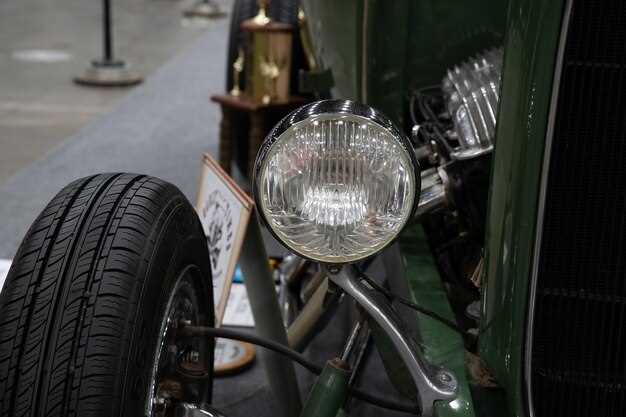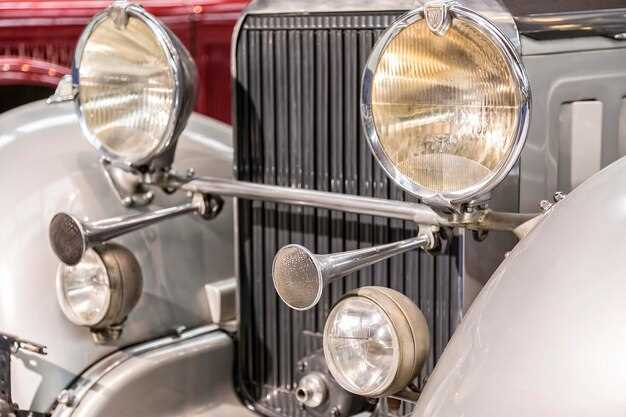
The vintage car market has experienced significant fluctuations over the years, driven by a variety of factors including economic conditions, consumer preferences, and technological advancements. Research indicates that classic cars not only hold sentimental value for enthusiasts but also represent a viable investment opportunity, making them increasingly attractive to collectors and investors alike.
Current trends show a growing interest in classic vehicles, with certain models achieving remarkable appreciation in value. The rise of online auctions and vintage car shows has facilitated greater access to potential buyers, further fueling demand in the market. Understanding these trends is crucial for both novice and seasoned collectors who wish to navigate the complexities of this unique niche.
As we delve deeper into the dynamics of the vintage car market, we will explore key factors influencing prices, the role of social media in shaping buyer preferences, and emerging trends that are likely to impact the future landscape of classic car collecting. The insights gained from this analysis can serve as a guideline for those looking to make informed decisions in this thriving market.
Identifying Key Growth Segments within the Classic Car Collecting Community

The classic car market has shown remarkable resilience and growth in recent years, attracting both established collectors and new enthusiasts. Research indicates several key segments within the classic car collecting community that are driving this expansion. Understanding these segments is crucial for stakeholders looking to invest or engage in this vibrant market.
One of the most promising growth segments is the younger demographic, particularly millennials and Gen Z collectors. This group is increasingly drawn to classic cars not only for their nostalgic value but also as a statement of individuality and lifestyle. Digital platforms and social media are playing a significant role in connecting younger collectors with the classic car market, making it more accessible than ever.
Another vital area of expansion is the rise of electric conversions of classic vehicles. Many collectors are now seeking to combine vintage aesthetics with modern technology. This trend caters to environmentally conscious consumers who want to preserve the classic car experience while reducing their carbon footprint. Companies specializing in electric conversions are rapidly gaining traction, indicating a shift in collector preferences.
The restoration and customization services market also continues to flourish. As the classic car community expands, so does the demand for specialized services that enhance the performance and appearance of these vehicles. Restoration projects, particularly those that maintain authenticity while incorporating modern upgrades, are increasingly popular among collectors aiming for both functionality and classic appeal.
Finally, collectible memorabilia, such as vintage parts, literature, and accessories, are gaining interest within the classic car community. Collectors are not only focused on the vehicles themselves but are also investing in items that enhance the overall experience of ownership. This segment presents further opportunities for growth in the market, as enthusiasts seek to enrich their collections with complementary artifacts.
In conclusion, the classic car collecting community is evolving, with new growth segments emerging that reflect changing consumer values and technological advancements. Research into these areas will provide valuable insights for industry participants aiming to leverage the potential of this dynamic market.
Assessing Market Demand Influenced by Economic Factors and Demographics

The vintage car market has witnessed significant growth over the past decade, largely driven by economic factors and shifting demographics. Understanding these elements is crucial for stakeholders aiming to navigate this niche market effectively.
Economic stability plays a vital role in assessing market demand for classic cars. As disposable incomes rise, more individuals can afford to invest in collectible vehicles. Economic indicators such as GDP growth, employment rates, and consumer confidence directly impact buyers’ willingness to enter this market. Research has shown that during times of economic expansion, luxury goods, including vintage automobiles, tend to see a surge in demand.
Demographic shifts are equally influential in shaping the vintage car market. Millennials and younger generations, who are increasingly interested in unique cars, bring new perspectives and preferences. This growing demographic group often seeks classic cars not only as investments but also as lifestyle statements. Their interest can lead to a resurgence in certain models that may have been overlooked by older collectors. Understanding these demographic changes is essential for predicting future trends within the market.
Furthermore, the increasing popularity of vintage car shows and related events reflects a cultural shift towards nostalgia and appreciation of classic automotive design. As awareness rises, research indicates that more people are likely to enter the market, thereby driving demand. Digital platforms and social media also play a crucial role in connecting buyers and sellers, making it easier to access information about vintage models and their values.
In conclusion, the interplay between economic factors and demographics is a fundamental aspect of assessing market demand in the vintage car sector. Continuous research into these elements is vital for recognizing emerging trends and making informed investment decisions.
Evaluating Future Investment Opportunities in Vintage Automobiles
The vintage car market has shown remarkable resilience and growth over the past decade, making it an intriguing avenue for potential investors. To make informed decisions, it is essential to conduct thorough research on market trends, collect data on classic vehicle sales, and analyze factors influencing value appreciation.
One critical aspect is identifying the categories of classic automobiles that typically appreciate in value. Historically, brands with a strong heritage and limited production runs tend to perform better. For instance, iconic models from manufacturers like Ferrari, Porsche, and Aston Martin frequently gain attention due to their storied pasts and collector demand.
Assessing market conditions also involves understanding the economic factors that contribute to the vintage car appeal. As disposable incomes rise, there is usually an increased interest in luxury collectibles, including classic cars. Globalization and the digital marketplace have facilitated international buying and selling, further propelling vintage automobiles into the spotlight.
Additionally, the influence of social media and online communities cannot be overlooked. Forums and social platforms dedicated to vintage car enthusiasts promote knowledge sharing and create a vibrant community that drives interest and market activity. Engaging with these communities during research can provide valuable insights into upcoming trends and popular models.
Lastly, considering environmental regulations and shifts toward sustainability is crucial. The rise of electric and hybrid vehicles contrasts with the traditional appeal of vintage cars. Investors should evaluate how these trends may impact the long-term desirability of classic automobiles and whether new regulations could create opportunities or challenges within the market.
In conclusion, evaluating future investment opportunities in vintage automobiles requires a comprehensive understanding of market dynamics, consumer preferences, and socio-economic factors. By conducting diligent research across these areas, investors can better position themselves to capitalize on the ever-evolving vintage car landscape.
